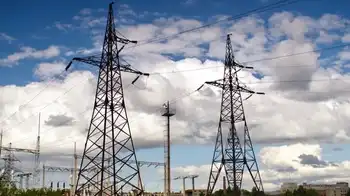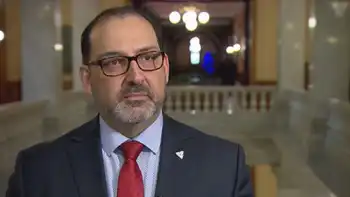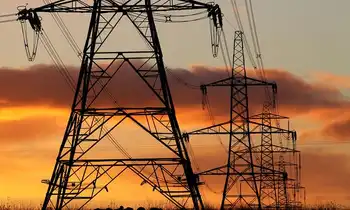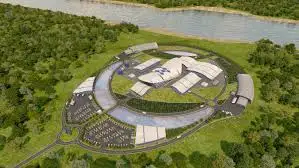New reactors key to Ontario power plan; Liberals propose up to two facilities
TORONTO, ONTARIO - A blueprint to avert Ontario's looming electricity crisis sets "aggressive" targets for energy conservation and clean, renewable power over the next 20 years, but nuclear power will continue to play a major and expensive role.
The province's plan calls for building one or two new reactors at an existing site, likely Darlington, at a cost of $2 billion to $3 billion, and examining the feasibility of refurbishing existing nuclear units.
The plan also calls for another delay in closing the province's heavily polluting coal-fired generating plants.
To make the addition of nuclear facilities and the delay in closing the coal plants more palatable to the public, the government has increased its commitment to conservation and renewable energy. However, critics are warning that the government's goals in those areas are vague and unrealistic.
Energy Minister Dwight Duncan said the Liberals will meet the growing need for energy with new nuclear generation capacity.
As well, Ontarians will be urged to double the amount of power saved through conservation efforts and the province will aim to double the amount generated through renewable sources, such as wind and hydroelectric power.
"There is nothing in this plan that does not have political overtones... yes, these are aggressive targets and we will move aggressively to meet them," said Duncan, whose government seeks re-election on Oct. 4, 2007.
Some of the plan highlights:
Reducing dependence on nuclear energy, which now accounts for 50 per cent of Ontario's usage, to 40 per cent by 2025, but maintaining a large fleet of reactors.
Limiting nuclear generation in two decades' time to 14,000 megawatts, the same as today.
Construction of one or two new reactors at an existing facility, and ordering Ontario Power Generation to conduct a feasibility study on refurbishing existing reactors. That should take 18 months to two years, meaning no decision on new reactors would come until after the next provincial election. Federally owned Atomic Energy of Canada Ltd. would be favoured with its Candu technology, but the government will check foreign competitors like Areva, General Electric and Westinghouse.
Doubling the amount of electricity from renewable sources, such as hydro, wind and solar power, from 7,855 megawatts to 15,700 megawatts by 2025.
Doubling the OPA's recommended conservation targets to reduce electricity demand by 6,300 megawatts by 2025. Conservation now accounts for just 675 megawatts. This massive effort will be achieved through smart meters to encourage electricity use in off-peak hours, new technology, and encouraging consumers to use more efficient light bulbs and appliances.
Further delaying the closing of Ontario's remaining coal-fired generating plants, with the Ontario Power Authority to advise on the earliest possible date they can be shut down without jeopardizing power supplies.
The plan is Premier Dalton McGuinty's long-delayed response to a December report from the arm's-length OPA, which called for an increase in nuclear generating capacity, more conservation and more renewable energy.
"I think Ontarians understand that we have really struggled with this," said McGuinty.
The OPA forecasts Ontario — which typically uses 25,000 megawatts of power on a hot day — won't have enough power to meet its needs by 2014, with the gap growing to 10,000 megawatts within 20 years unless urgent steps are taken.
The price tag for the government's plan is estimated at $46 billion at today's prices or $70 billion by 2025, which Duncan said he couldn't guarantee.
"It will be up to this government... presumably subsequent governments... to bring these costs and these projects in on time and on budget."
With electricity ratepayers footing the bill, hydro prices are bound to increase, experts said.
Tom Adams of Energy Probe predicted "at least double-digit" rate hikes for several years because of continued dependency on costly and unreliable nuclear plants that are prone to breakdowns and budget overruns.
Opponents pounced on the uncertainty in the Liberal plan, saying voters cannot trust a government that has twice broken a key campaign promise to close all of Ontario's coal-fired generating stations by 2009.
"If they'd come forward today and stated a bold target for conservation and had even the slightest detail as to how they're going to achieve that and by when, then maybe you'd say you might give them a second chance," said Progressive Conservative Leader John Tory.
"No such luck."
Duncan had no details beyond saying there would be more than $1 billion in programs that include smart meters for homeowners and money-saving coupons for energy-efficient light bulbs, ceiling fans and air conditioners.
Municipal Affairs Minister John Gerretsen is expected to table building code amendments soon that would require more energy-efficient houses.
Such dramatic steps should have been taken years ago, said NDP Leader Howard Hampton, noting Ontario lags behind California and Manitoba, which spend about 30 times more per capita than this province on conservation.
"The air is going to get more polluted, hydro bills are going to go up and when you strip away the vague promises of energy conservation and efficiency sometime in the future, this is all about go nuclear and go big," Hampton said.
In a sign of the rocky road ahead over the decision to build more nuclear units, seven Greenpeace activists occupied Duncan's office at Queen's Park, chaining themselves to each other.
"We're going to be in the minister's face for the next 10 years," said spokesperson Shawn-Patrick Stensil, noting that's how long it's expected to take for a new nuclear reactor to be approved and built.
He questioned continued heavy reliance on nuclear power given the massive cost overruns when nuclear plants were originally constructed and later refurbished, and a poor record of breakdowns.
Clarington Mayor John Mutton invited the province to build new nuclear facilities in his community, home to the Darlington nuclear station.
"The municipality of Clarington is supportive of nuclear power," Mutton told Duncan in a recent email.
Kincardine Mayor Glen Sutton also said his community is a willing host for a new reactor.
"We have the space, we have the workforce and the commitment to help the province with its energy needs," he said in an interview.
Atomic Energy of Canada Ltd. won't necessarily get the business after troubles with Ontario's existing Candu reactors, which the company built, Duncan said.
The government wants guarantees to minimize the impact of cost overruns, he said.
Federal government sources told the Star the Conservative government is willing to talk about providing cash to support a made-in-Canada option for Ontario's new nuclear units.
It would secure jobs and help Candu's international reputation, but expose taxpayers to helping bankroll any cost overruns.
Related News
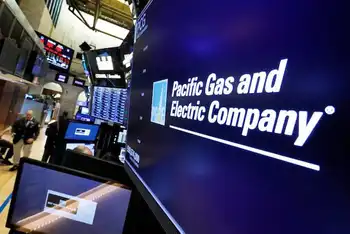
PG&E's bankruptcy plan wins support from wildfire victims
BERKELEY - Pacific Gas & Electric's plan for getting out of bankruptcy has won overwhelming support from the victims of deadly Northern California wildfires ignited by the utility's fraying electrical grid, despite concerns that they will be shortchanged by a $13.5 billion fund that's supposed to cover their losses.
The company announced the preliminary results of the vote on Monday without providing a specific tally. Those numbers are supposed to be filed with U.S. Bankruptcy Judge Dennis Montali by Friday.
The backing of the wildfire victims keeps PG&E on track to meet a June 30 deadline to emerge from bankruptcy in time…

